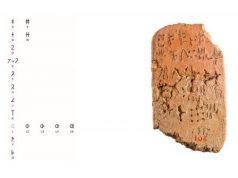An amazing construction method for curved structures was developed at TU Wien (Vienna): With a flick of the wrist, flat grids become a 3-D shape.
How can you turn something flat into something three-dimensional? In architecture and design this question often plays an important role. A team of mathematicians from TU Wien (Vienna) has now presented a technique that solves this problem in an amazingly simple way: You choose any curved surface and from its shape you can calculate a flat grid of straight bars that can be folded out to the desired curved structure with a single movement. The result is a stable form that can even carry loads due to its mechanical tension.
The step into the third dimension
Suppose you screw ordinary straight bars together at right angles to form a grid, so that a completely regular pattern of small squares is created. Such a grid can be distorted: all angles of the grid change simultaneously, parallel bars remain parallel, and the squares become parallelograms. But this does not change the fact that all bars are in the same plane. The structure is still flat.
The crucial question now is: What happens if the bars are not parallel at the beginning, but are joined together at different angles? “Such a grid can no longer be distorted within the plane,” explains Przemyslaw Musialski. “When you open it up, the bars have to bend. They move out of the plane into the third dimension and form a curved shape.”
Find your dream job in the space industry. Check our Space Job Board »
At the Center for Geometry and Computational Design (GCD) (Institute for Discrete Mathematics and Geometry) at TU Wien, Musialski and his team developed a method that can be used to calculate what the flat, two-dimensional grid must look like in order to produce exactly the desired three-dimensional shape when it is unfolded. “Our method is based on findings in differential geometry, it is relatively simple and does not require computationally intensive simulations,” says Stefan Pillwein, first author of the current publication, which was presented at the renowned SIGGRAPH conference and published in the journal ACM Transactions on Graphics.
Experiments with the laser scanner
The team then tried out the mathematical methods in practice: The calculated grids were made of wood, screwed together and unfolded. The resulting 3-D shapes were then measured with a laser scanner. This proved that the resulting 3-D structures did indeed correspond excellently to the calculated shapes.
Now even a mini pavilion roof was produced; measuring 3.1 x 2.1 x 0.9 meters. “We wanted to know whether this technology would also work on a large scale—and it worked out perfectly,” says Stefan Pillwein.
“Transforming a simple 2-D grid into a 3-D form with a single opening movement not only looks amazing, it has many technical advantages,” says Przemyslaw Musialski. “Such grids are simple and inexpensive to manufacture, they are easy to transport and set up. Our method makes it possible to create even sophisticated shapes, not just simple domes”.
The structures also have very good static properties: “The curved elements are under tension and have a natural structural stability—in architecture this is called active bending,” explains Musialski. Very large distances can be spanned with very thin rods. This is ideal for architectural applications.
Provided by: Vienna University of Technology
More information: Stefan Pillwein et al. On Elastic Geodesic Grids and Their Planar to Spatial Deployment. ACM Transactions on Graphics. DOI: 10.1145/3386569.3392490
Image: A curvy shape created from a flat grid.
Credit: Vienna University of Technology, TU Vienna











